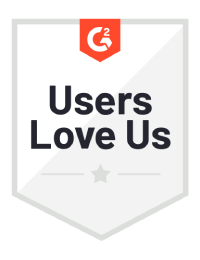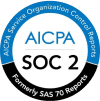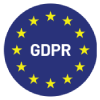Since its release, ChatGPT, developed by OpenAI, has taken the internet by storm with enthusiastic reviews for its ability to generate comprehensive text. Once you submit a prompt, ChatGPT takes mere seconds to create a response.
The tool utilizes a large language model (LLM) to process expansive text data sets and learn the language to produce answers based on received inputs. While similar models already exist, ChatGPT’s popularity is due to its ability to perform a variety of tasks, including answering simple and complex questions, writing college essays, screenplays, social media posts, and even code. This presents a promising opportunity to use artificial intelligence (AI) for candidate sourcing and recruitment. Recruiters can ask ChatGPT to write job descriptions, outreach emails to candidates, screen resumes, and schedule interviews.
However, despite its impressive ability to generate conversational text, there are concerns regarding the reliability of the generated content. So, should you use ChatGPT to write job descriptions? The short answer is yes, but there is more to it. In this article, we explore how to use ChatGPT to generate job descriptions, as well as the risks and benefits associated with it. We also assess its impact on other avenues like diversity, equity, and inclusion (DE&I) and employer branding.
How to use ChatGPT for job description
Utilizing ChatGPT effectively can transform the tedious task of writing a suitable job description into a seamless and efficient process. The accuracy of the outcome is linked to the quality of the prompt you provide for the task.
What is a prompt, moreover a well-drafted prompt? Well, it is a focused and specific set of instructions provided to the AI. Here are three key components of a prompt:
- Precise instructions: Clearly instruct the AI on its role, such as acting as a talent acquisition expert, and guide it to focus on specific aspects of the job. Provide details on the desired writing style, tone, and any specific formatting requirements.
- Key information: Give ChatGPT details about the job, covering title, company, hours, location, compensation, and purpose. Also specify the kind of candidate you need for the job.
- Formatting guidelines: Outline the desired structure, specifying the headers and regular text. Define headers for sections like company name, job title, hours, location, compensation, job purpose, duties, qualifications, education, experience, skills, and working conditions.
Well, we’ve done the analysis for you! Take a gander at this go-to source for a complete understanding of how AI can be used in TA.
Are You Evaluating the Pros and Cons of AI for Talent Acquisition?
3 ChatGPT Tools for Writing Job Descriptions
LinkedIn now offers an AI-powered job description tool. Users can quickly create and customize job descriptions with basic details like job title, company name, job type, workplace type, and location. LinkedIn further aids users in enhancing their profiles by suggesting relevant skills and work experiences, allowing them to stand out in the competitive job market.
Samary
Samary is a Google Chrome extension that summarizes job descriptions on popular platforms like LinkedIn, Monster, Glassdoor, and CareerBuilder. Powered by ChatGPT, it ensures clear, structured, and consistent summaries for easy reading.
Using it is fairly easy: simply install, open your job portals, and click “Summarize Job Post” for key highlights of a job description. Samary offers a free trial with 20 summaries on key platforms. The premium version at $2.99 USD/week or $6.99 USD/month, unlocks 300 or 1000 job summaries, premium support, and integration options for your preferred job portal.
Comptool’s job description manager
With this ChatGPT based tool you can easily craft job descriptions. Its specialty is the flexibility to select and arrange different sections in a job description. Once you’ve set up a JD template, it will generate a description covering the chosen sections in your preferred order.
Along with speeding up the writing process, this tool lets you save past versions of job descriptions. This way you can review and analyze JDs from various time periods. Plus, it conveniently gathers all your job descriptions in one place for easy access and management.
Using ChatGPT for Job Descriptions: The Benefits
Although ChatGPT can be helpful for creating detailed job descriptions, it has pros and cons. Let’s go through the good parts first. Here are some significant benefits of using ChatGPT.
- Generate job descriptions efficiently
Job descriptions serve as formal documents within the organization and often require collaborative efforts across teams to get them right. Naturally, it’s arduous and time consuming, especially if you plan to hire at scale. With ChatGPT, recruiters and hiring managers can generate job descriptions within minutes based on organizational requirements. ChatGPT can produce similar ones if templates are available and can also modify its responses based on further input.
Once trained, the model can generate compelling job descriptions, saving recruiters significant time and resources.
- Maintain text consistency while customizing
Organizations often use standard language, style, and format to create content, including job descriptions. ChatGPT ensures that the language, writing style, and format stay consistent across its output despite the speed. Concurrently, it allows you to customize the description to accurately depict the role requirements and specific needs of the organization and the industry. This makes it ideal when hiring for multiple roles or scaling up hiring.
- Reduce Bias in your Job Descriptions
According to ChatGPT, as a language model, it is trained to reduce bias in its responses. Moreover, it is also trained to detect and avoid language that can perpetuate harmful stereotypes or discrimination. Using ChatGPT to write job descriptions can help you avoid gendered and biased language and use more neutral terms and language instead.
However, as with all AI models, biases can seep into the system if they exist within the data set. This brings us to the negative impact of using ChatGPT to write job descriptions.
Risks of Using ChatGPT to Create Job Descriptions
Here are some risks to consider when using ChatGPT.
- The missing human touch
One of the first criticisms of using AI-powered tools (like chatbots) is the lack of human connection. Although ChatGPT can create compelling job descriptions, it lacks the intuition and skill that experienced recruiters and hiring managers have. This can lead to job descriptions that are vague, too generic, and not tailored to the role requirements or the company. Also, if you are hiring for a new role, it might not be able to capture the essence of the position and will create a poor draft.
This could affect your employer brand, as candidates may perceive communication as inauthentic and cold.
- Concerns about quality and reliability
Despite its popularity, ChatGPT has received backlash for generating incorrect responses, for example creating fake citations in college papers. In another instance, Stack Overflow reported an influx of inaccurate answers generated by ChatGPT and eventually banned it temporarily from the platform
ChatGPT can write, edit and even summarize text-based content per your needs. But it may not always meet your standards to create high-quality job descriptions. In addition, the output’s reliability depends on the tool’s training data – if the data is flawed, it can generate incomplete, inaccurate, or poorly written job descriptions.
- Impact on diversity, equity, and inclusion (DEI)
While ChatGPT claims to avoid bias, it also acknowledges that it is not perfect at recognizing and addressing all kinds of bias. AI tools that learn from invalid datasets will even generate content that promotes discrimination. For instance, if ChatGPT creates a job description with gendered and non-inclusive language, it will deter people from historically underrepresented groups from applying. It can also negatively affect your DE&I practices.
As ChatGPT says, it is the responsibility of the users to critically evaluate and interpret the responses before using them. Moreover, examining biases in your hiring practices and teams is equally important to ensure that you are not unintentionally propagating exclusionary practices.
Using ChatGPT Correctly
So, how do you use ChatGPT to your advantage? We say, use it wisely and with caution. Remember these best practices:
- Don’t rely solely on ChatGPT – it is simply a tool to aid the writing process. But it can help you prepare the first draft, which is often the most challenging part, and you can continue refining it.
- Use ChatGPT for low-intensity tasks like brainstorming ideas and keywords, summarizing documents, and creating first drafts for your job descriptions.
- You can also direct ChatGPT to perform admin tasks like scheduling interviews, writing and personalizing email drafts for candidates, creating social media posts, and other engaging content.
- Frequently vet its responses for incorrect or biased content – ensure it is congruent with your company values, DE&I efforts, and policies
- Define policies surrounding the use of AI in hiring. With legal bodies regulating the use of AI, it is vital to ensure compliance and check information before publishing it.
Final Verdict: To Use or Not to Use ChatGPT
ChatGPT is all the rage currently, with people using it for various purposes, though it has its pitfalls, like creating incorrect content. Regardless, it can be a valuable tool to generate job descriptions if used with recruiters’ expertise and judgment. For instance, it can take over admin tasks, help with brainstorming, and create first drafts for you to develop. However, it is essential to remember that even AI programs can create biased content and vet it consistently.
While you figure out how to best use ChatGPT, get started on your talent sourcing and acquisition journey with Joveo. Book a demo today to kickstart your talent acquisition goals! And follow us on Twitter and LinkedIn, where we’re always working to help you get the most out of your recruitment advertising.















